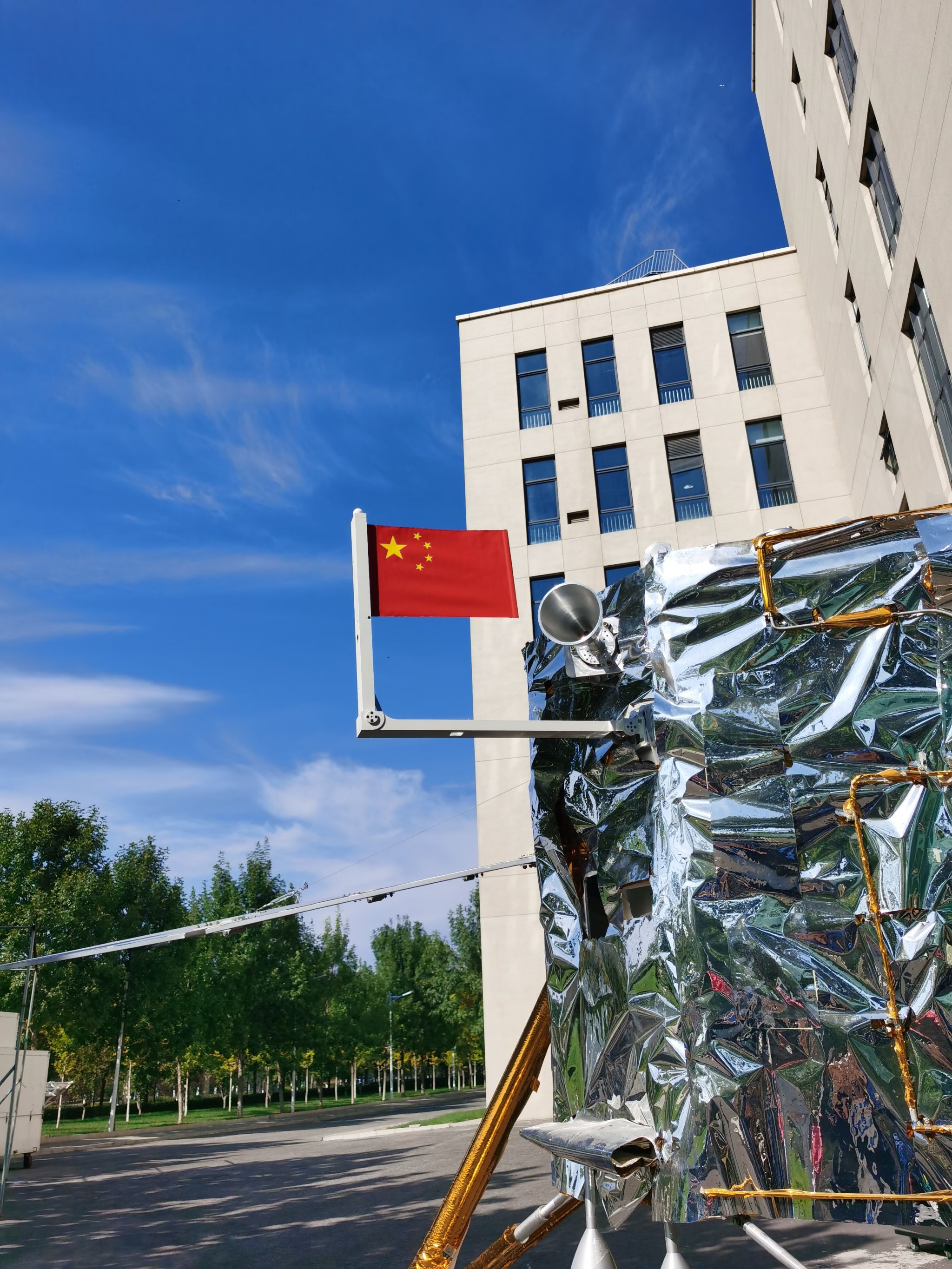On June 3rd, after the lunar surface sampling was completed, a "stone version" of a five-star red flag made of basalt fiber carried by the Chang 'e-6 lander was successfully unfurled on the far side of the moon, and the flag in Chang 'e-6's hand showed a bright Chinese red under the sunlight. This is the first time that China has independently displayed the national flag on the far side of the moon.

Chinese scientists overcame a number of challenges to develop the special national flag, made of basalt fibers, that was unfurled earlier this week by the lander of the Chang'e 6 lunar probe. The flag, made to withstand extreme environments such as medium, high and low temperature fluctuations, high vacuum conditions and strong ultraviolet radiation, caught the eye of people around the world when it became the first flag of any country to fly on the far side of the moon. The basalt fiber was jointly developed by Wuhan Textile University and China Space Sanjiang Group Co.

Xu Weilin, an academician at the Chinese Academy of Engineering, said his team successfully developed the high-quality "stone version" fabric national flag after overcoming major hurdles over the past four years, including difficulty weaving the fibers and ensuring that the colors won't fade. Basalt fiber has excellent thermal insulation and radiation resistance, so it can withstand the harsh lunar environment, according to Xu, who is also president of Wuhan Textile University in Hubei province.


The features of basalt fiber, an inorganic fiber, include a smooth surface, brittleness and fragility, which makes it difficult to spin and weave, Xu said. The flag that Chang'e 6 unfurled on the moon is the same size as the one planted during the Chang'e 5 mission on the near side of the moon — 30 centimeters by 20 cm, which is about the same size as a sheet of A4 paper.But the density of the basalt fibers used in the Chang'e 6 flag is nearly twice that of the Chang'e 5 flag, which makes it reasonable to assume that the basalt fiber flag is heavier, he said. However, Xu's team developed ultrafine basalt fibers with a diameter about one-third that of human hair, so the Chang'e 6 flag weighs just 11.3 grams, which is 0.5 gram lighter than the Chang'e 5 flag, said Xu. As a lightweight and flexible protective material, basalt fiber will be used increasingly in the aerospace sector, such as for spacesuits, spacecraft and lunar bases, he said. Xu said his team has begun research on the application of basalt fibers in areas such as heat resistance and flame retardance, including for protective clothing and bags, fully leveraging the ability of ultrafine basalt to withstand special environmental conditions such as high temperatures.

Cao Genyang, a professor on Xu's team who also participated in the development of the Chang'e 5 flag, said a fireproof suit made of basalt fibers is not only fire-resistant and insulative against heat, but also cost-effective." Basalt fiber costs 25,000 yuan ($3,450) per metric ton, which is much lower than quartz fiber and carbon fiber ... and thus the market prospects are very promising," he said. According to Cao, typical firefighting suits and lifesaving rope are usually made of organic materials, and they will burn when exposed to high temperatures of 550 C. However, he said, "The melting point of the basalt fiber garment is 1,600 C, so it can be used for a short time at a high temperature of 1,200 C, and for a long time at 800 C. "Firefighting suits, fire blankets and related products made from basalt fibers will be gradually produced in the years ahead, he added.
